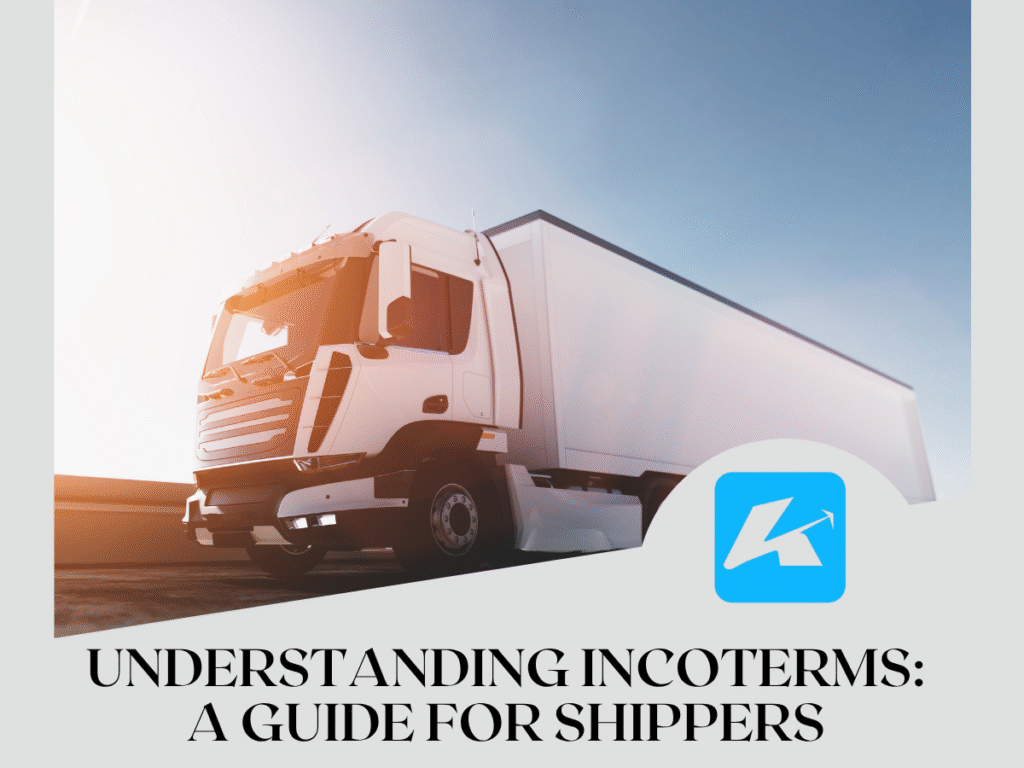Shipping goods—whether across town or across the globe—can feel like a puzzle with pieces like costs, risks, and responsibilities. Enter Incoterms: a set of rules that clarify who handles what in a shipment. For shippers, mastering Incoterms is key to smooth logistics and avoiding costly mix-ups.
Introduced by the International Chamber of Commerce (ICC), these terms standardize international trade. Ready to decode them?
This guide breaks down Incoterms with five practical steps to help shippers navigate deals with confidence.

1. What Are Incoterms and Why They Matter
Incoterms, short for International Commercial Terms, are a set of 11 standardized rules updated by the ICC, with the latest version from 2020. They define who—buyer or seller—pays for transport, insurance, and customs, and when the risk of loss or damage shifts.
For example, under FOB (Free on Board), the seller covers costs until the cargo is loaded onto a ship, then the buyer takes over. Misunderstanding these can lead to disputes, delays, or extra fees. For shippers, Incoterms bring clarity and control to domestic and global deals.
Pro Tip: Grab a copy of the ICC’s Incoterms 2020 chart or booklet from their website to keep the rules handy for every shipment.
2. Know the Key Incoterms Groups
Incoterms are split into four groups—E, F, C, and D—based on how duties and risks are shared. Here’s a quick rundown:
- E Group (EXW – Ex Works): The seller does the least, making goods available at their premises. The buyer handles all costs and risks from there.
- F Group (FCA, FAS, FOB): The seller covers initial steps, like delivery to a carrier (FCA) or alongside a ship (FAS), then the buyer takes over.
- C Group (CPT, CIP, CFR, CIF): The seller pays for transport (e.g., to a destination port), but risk shifts to the buyer earlier.
- D Group (DAP, DPU, DDP): The seller bears most costs and risks, delivering to a named place (DAP) or even covering duties (DDP).
Each suits different needs—EXW for simple pickups, DDP for hands-off buyers.
Action Step: List your shipment’s needs—distance, cost control, risk tolerance—and match them to an Incoterm group.
3. Choose the Right Incoterm for Your Shipment
Picking the perfect Incoterm depends on your cargo, destination, and priorities. Shipping perishables internationally? CIP (Carriage and Insurance Paid To) includes insurance, protecting against loss. For domestic freight, FCA (Free Carrier) lets you hand off to a carrier early, keeping things simple.
Consider costs: CIF (Cost, Insurance, and Freight) has the seller pay to the port, but the buyer risks damage during transit. For max control, DDP (Delivered Duty Paid) has the seller handle everything, though it’s pricier.
Companies like Kargage, based in Jackson, Mississippi, help shippers align Incoterms with logistics for seamless delivery.
Quick Tip: Talk to your buyer and carrier. Agree on an Incoterm that balances cost, risk, and effort for both sides.
4. Document and Communicate Clearly
Incoterms only work if everyone’s on the same page. Miscommunication can lead to unpaid fees or stranded cargo. Include the chosen Incoterm (e.g., “FOB Shanghai, Incoterms 2020”) in your sales contract, purchase order, and Bill of Lading.
Specify the exact point of transfer—say, a port or warehouse—to avoid confusion. For instance, with DAP (Delivered at Place), name the destination clearly, like “DAP 123 Main St, Chicago.” Pair this with accurate customs docs, like invoices and export forms, to breeze through borders.
Clarity prevents headaches and keeps shipments moving.
Best Practice: Double-check all paperwork. Share the Incoterm and details with your buyer, carrier, and broker to align expectations.
5. Stay Updated and Seek Expert Help
Incoterms evolve— the ICC updates them every decade, with Incoterms 2020 being current as of June 09, 2025. New trade rules, tariffs, or global shifts can affect how they apply. For example, DPU (Delivered at Place Unloaded) replaced DAT in 2020, adding flexibility for unloading at any site.
If international shipping feels tricky, lean on experts. Customs brokers, freight forwarders, or logistics pros can guide you through Incoterms and compliance. Kargage, for instance, pairs shippers with carriers to match Incoterms to real-world needs, smoothing the process.
How to Start: Follow ICC updates online. Consult a broker or logistics expert for complex shipments to ensure you’re covered.

Putting It All Together
Understanding Incoterms is a game-changer for shippers. By grasping the basics, knowing the groups, choosing the right term, documenting clearly, and staying updated, you can ship with confidence, whether local or global.
Incoterms aren’t just rules—they’re tools to cut costs, manage risks, and build trust with buyers and carriers. At Kargage, we’ve seen how the right Incoterm keeps shipments on track for our clients. But this isn’t about us—it’s about you.
Ready to ship smarter? Call us at (727) 628-3545 for a quote. With this guide, you’re set to master Incoterms and move your cargo like a pro.

